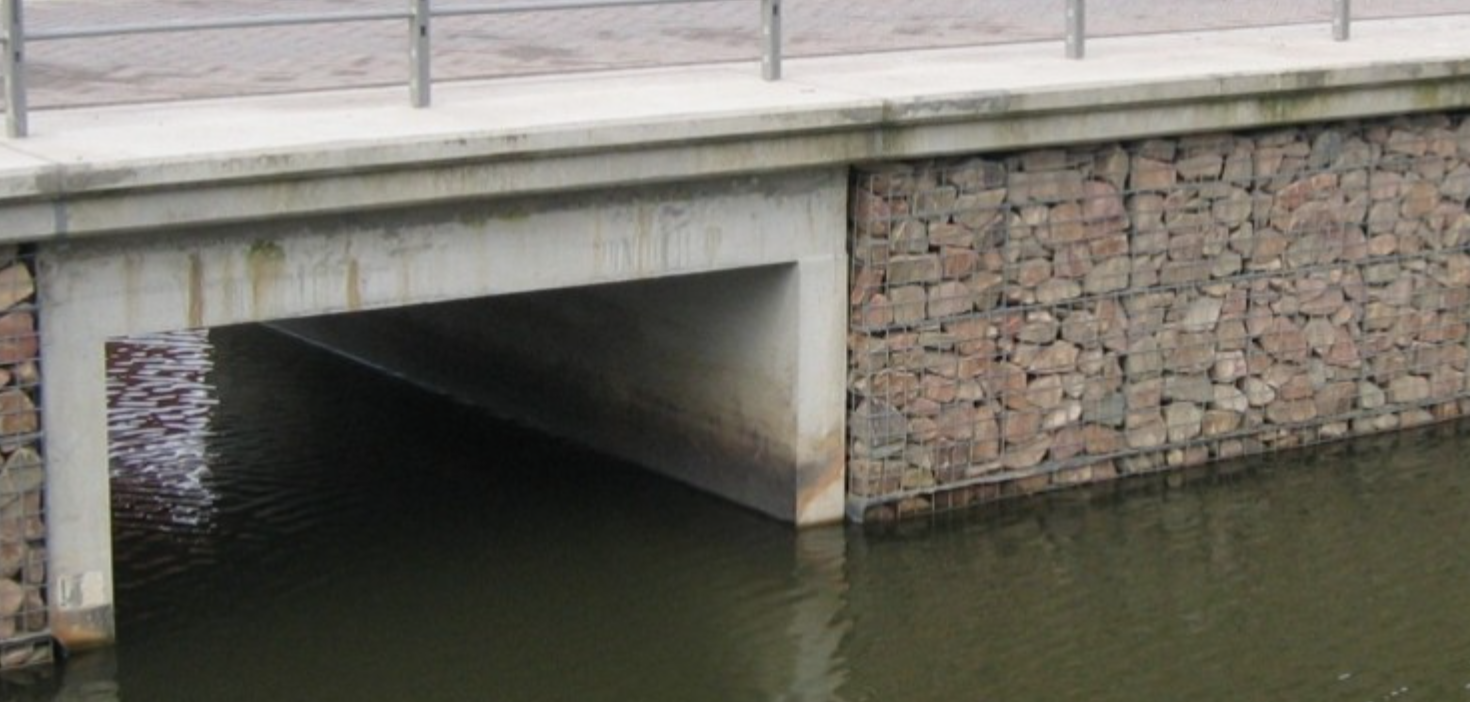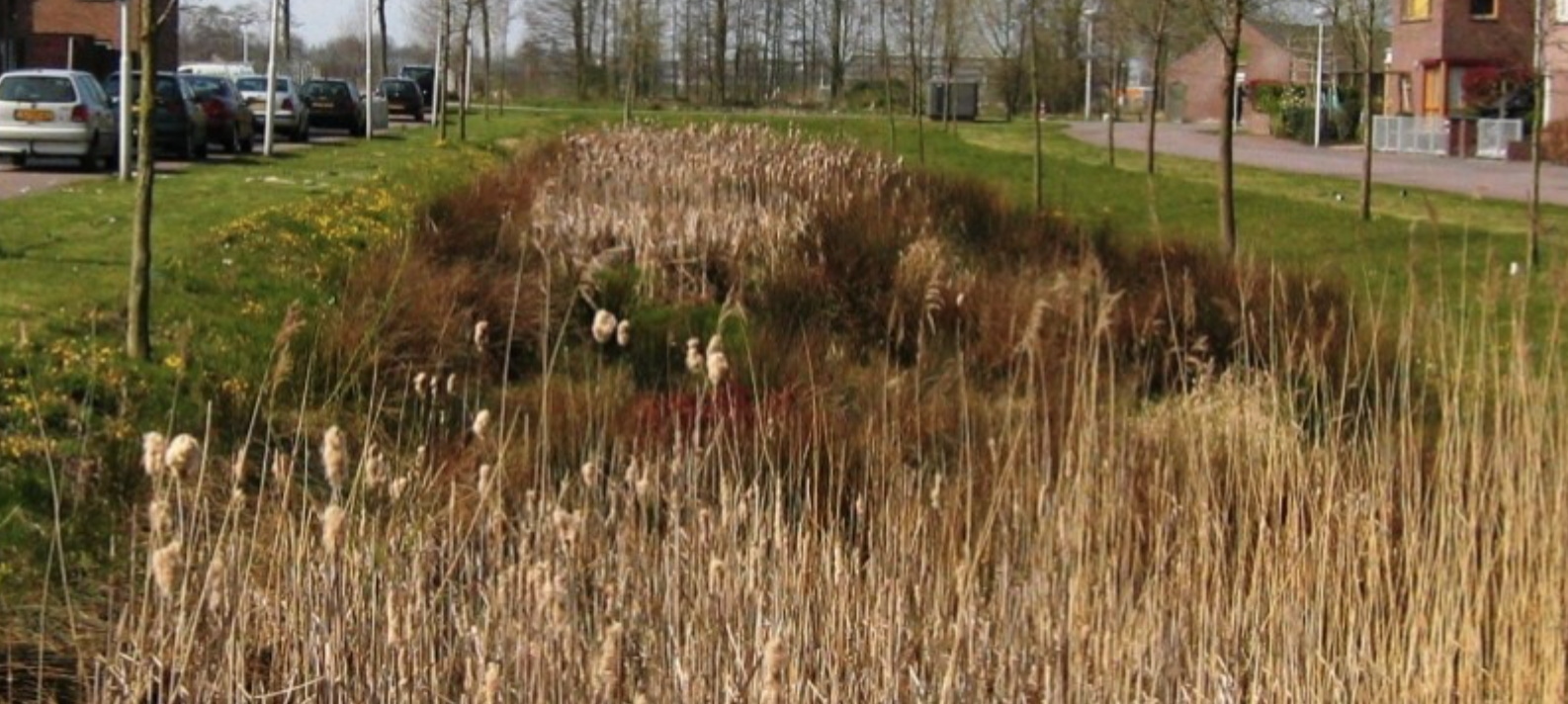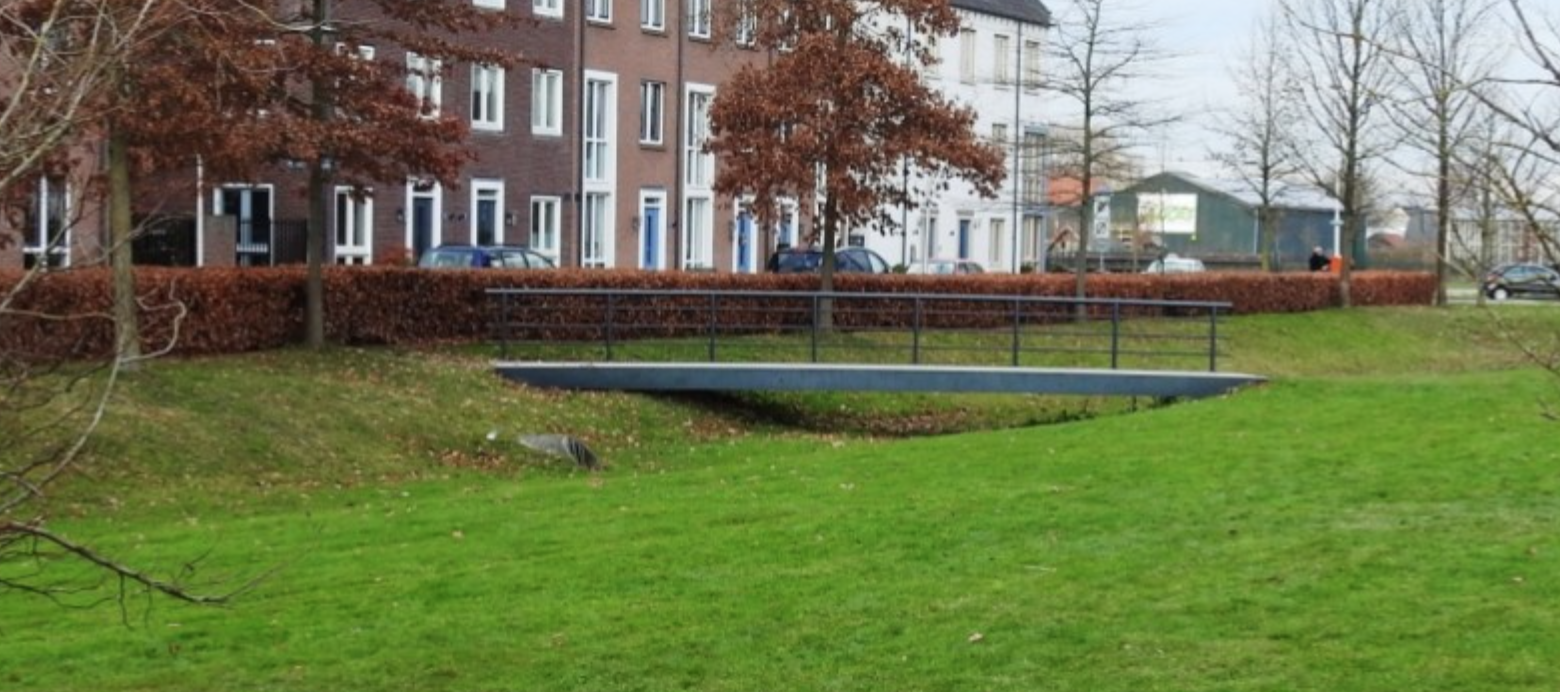The surface water system in the VINEX location Leidsche Rijn near Utrecht is a special water system. Nowhere in the Netherlands is the surface water of such a large urban area treated in such a sustainable and climate-proof manner (ref. 2). In Leidsche Rijn, a relatively new city district of Utrecht, a sustainable closed circuit water system was introduced including natural wetlands, bioswales, pumping stations and permeable paving which filters stormwater organically. It is viewed as a more sustainable solution compared to traditional stormwater infrastructure because it benefits biodiversity (e.g. by means of fish passages) and prevents the need for storm water facilities and the influx of unfiltered surface water from elsewhere (ref. 1-3).
Overview
Nature-based solution
- Blue infrastructure
- Lakes/ponds
- In-land wetlands, peatlands, swamps, and moors
- Green areas for water management
- Swales and filter strips
- Sustainable urban drainage systems
Key challenges
- Climate action for adaptation, resilience and mitigation (SDG 13)
- Climate change adaptation
- Green space, habitats and biodiversity (SDG 15)
- Habitat and biodiversity restoration
- Green space creation and/or management
- Water management (SDG 6)
- Flood protection
- Stormwater and rainfall management and storage
- Improvements to water quality
- Health and well-being (SDG 3)
- Creation of opportunities for recreation
Focus
Project objectives
Implementation activities
Climate-focused activities
Climate change adaptation:
- Restore wetlands and/or coastal ecosystems to dissipate the effects of flooding and/or storms
- Implement sustainable urban drainage infrastructure (e.g. to make space for water)
Biodiversity conservation or restoration-focused activities
Biodiversity restoration:
- Rehabilitate and restore damaged or destroyed ecosystems
- Restore species (native, endangered, or unspecified)
- Restore ecological connectivity
Main beneficiaries
- Local government/Municipality
- Citizens or community groups
Governance
Management set-up
- Co-governance with government and non-government actors
Type of initiating organisation
- Regional government
- Local government/municipality
Participatory approaches/ community involvement
- Taskforce groups
- Consultation (e.g. workshop, surveys, community meetings, town halls)
- Co-management/Joint management
- Citizen oversight (e.g. boards, advisory)
- Other
Details on the roles of the organisations involved in the project
Project implemented in response to ...
Financing
Total cost
Source(s) of funding
- Public local authority budget
- EU funds
Type of funding
- Earmarked public budget
- Direct funding (grants, subsidies, or self-financed projects by private entities)
Non-financial contribution
Impacts and Monitoring
Environmental impacts
- Water management and blue areas
- Improved water quality
- Increased protection against flooding
- Improved stormwater management
- Green space and habitat
- Increased conservation or restoration of ecosystems
- Reduced biodiversity loss
Economic impacts
- Unknown
Socio-cultural impacts
- Health and wellbeing
- Gain in activities for recreation and exercise
- Other
Type of reported impacts
Presence of formal monitoring system
Presence of indicators used in reporting
Presence of monitoring/ evaluation reports
Availability of a web-based monitoring tool
References
2. Wareco. (n.d.) Watersysteem Leidsche Rijn. Available at: Source link (Accessed 25 July 2020)
3. Rooijmans, P. (1997). Nieuwe stad, schoon water. Het watersysteem van Leidsche Rijn. [pdf] Utrecht: The Netherlands. Available at:
Source link (Accessed 25 July 2020)
4. Sportvisserij Nederland. (2008). Gemaal Vleuterweide in werking gesteld. Available at: Source link (Accessed 25 July 2020)
5. Burger, M . & Verhoeven, C. (n.d.). Platform. Available at: Source link (Accessed 25 July 2020)
6. European Commission. (2014). The LIFE 2014-2020 Regulation (EC) No 1293/2013. Available at: Source link (Accessed 25 July 2020)
7. Rijksoverheid. (1996). Vierde Nota Ruimtelijke Ordening Extra (VINEX). Available at: Source link (Accessed 25 July 2020)
8. Gemeente Utrecht (n.d.). Groenbeleid. Available at: Source link (Accessed 25 July 2020)
9. Davies, C., Hansen, R., Rall, E., Pauleit, S., Lafortezza, R., DeBellis, Y., Santos, A. and Tosics, I., 2015. Green Infrastructure Planning and Implementation (GREEN SURGE). The status of European green space planning and implementation based on an analysis of selected European city-regions, Source link. Available at: Source link (Accessed 25 July 2020)
10. Gemeente Utrecht (2007). Atlas voor de openbare ruimte Utrecht. Available at: Source link (Accessed 25 July 2020)
11. Province of Utrecht (n.d.) Agenda Vitaal Platteland. Available at: Source link (Accessed 25 July 2020)




